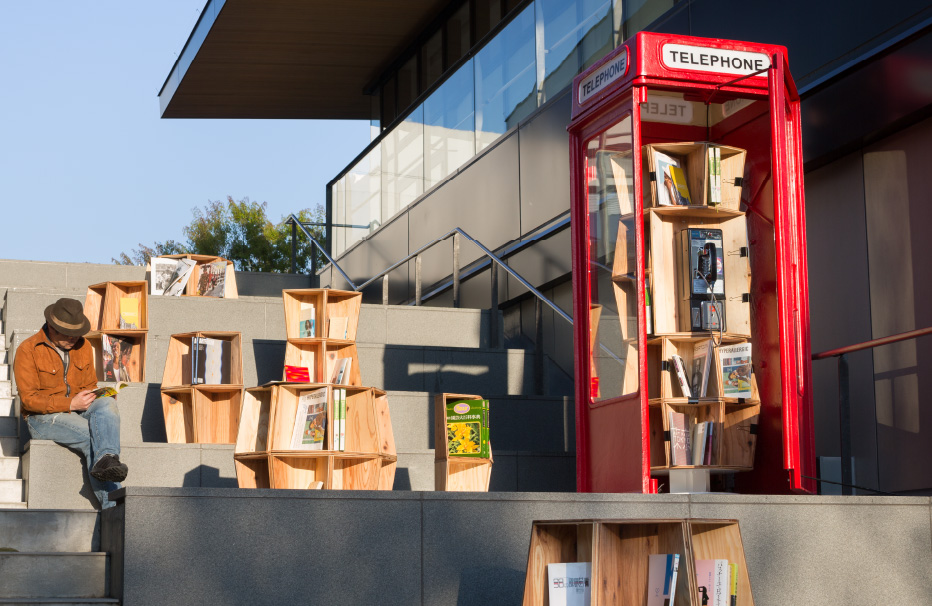
Telephone After All is a public art installation designed to create spontaneous encounters between strangers. The work consists of two restored public telephones connected like an internal line: when one receiver is lifted, the other begins to ring. This simple gesture invites nearby passersby to answer, sparking brief and unexpected conversations with someone they have never met. By slowing the act of communication, the piece recalls a time when calling someone far away was a meaningful moment—an act shaped by longing, courage, and care. It reminds us that conversation itself can be intimate and extraordinary, even among strangers.
At the same time, Telephone After All extends beyond its functional mechanism into a platform for shared cultural presence. The installation operates as a micro-library where books are freely exchanged, allowing personal memories and narratives to circulate through the hands of others. The work also becomes a site for performance, most notably in the collaborative play A Robot in Love, created with a local theater group. In this story, a letter-delivering robot gradually learns the desire to write a letter of its own, eventually offering a love letter to a human girl. The performance unfolded not only in and around the installation but also throughout the neighborhood, creating a gentle, communal ripple of storytelling in public space.
Through these layers of interaction—conversation, exchange, movement, and shared imagination—Telephone After All becomes more than an object.
It is a living social stage, one that continues to evolve through the hands and voices of those who encounter it.
The work asks us to remember that communication is not merely the transfer of information, but an act of attention, tenderness, and presence.

